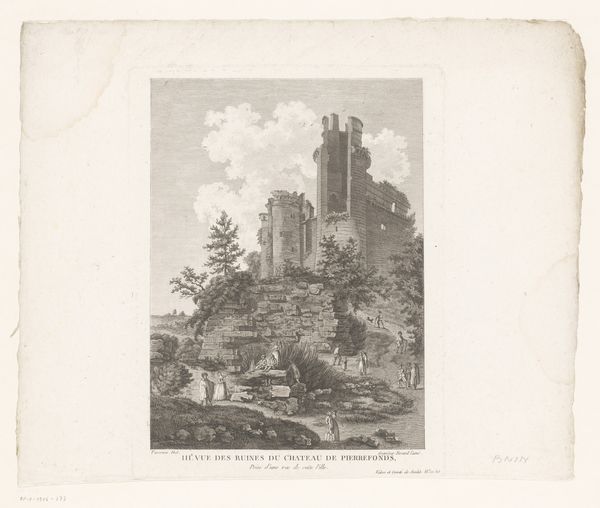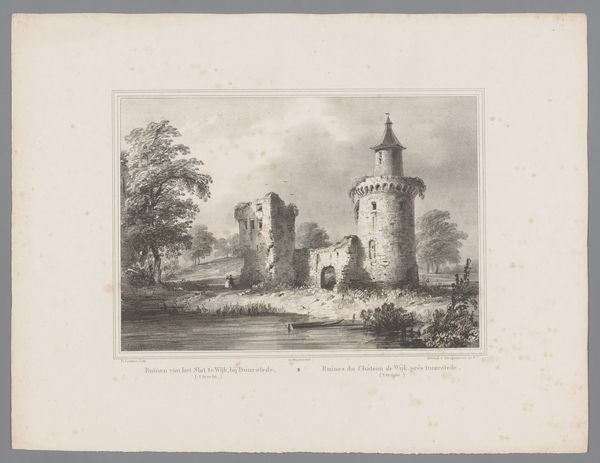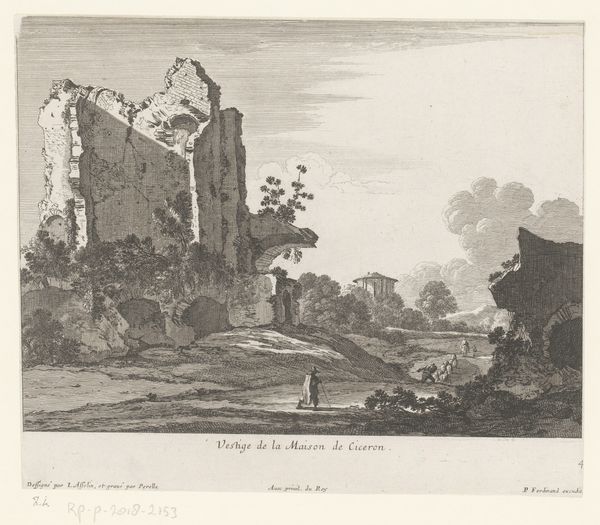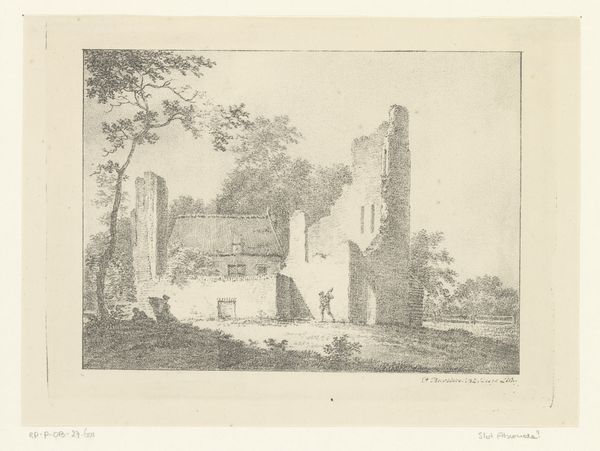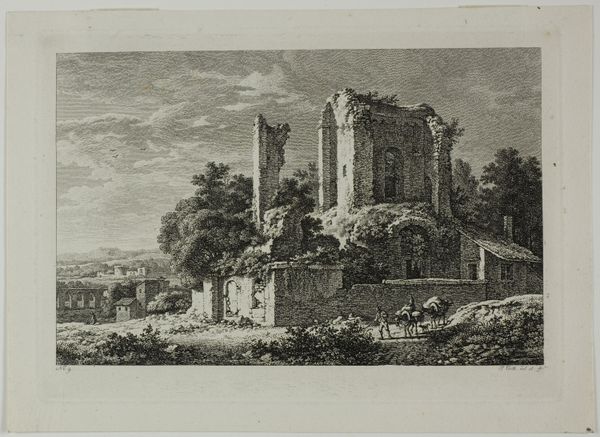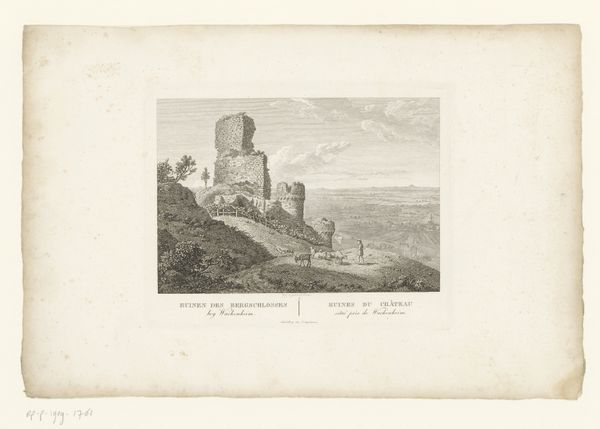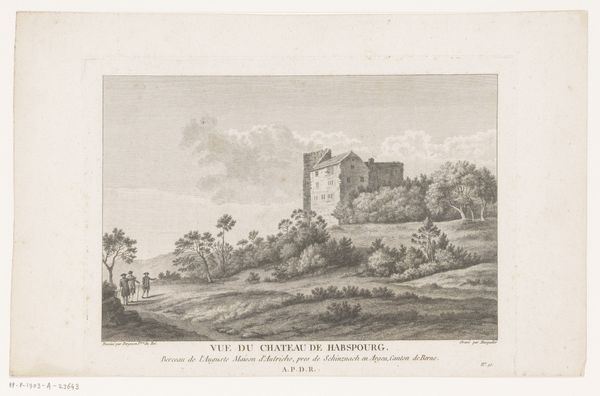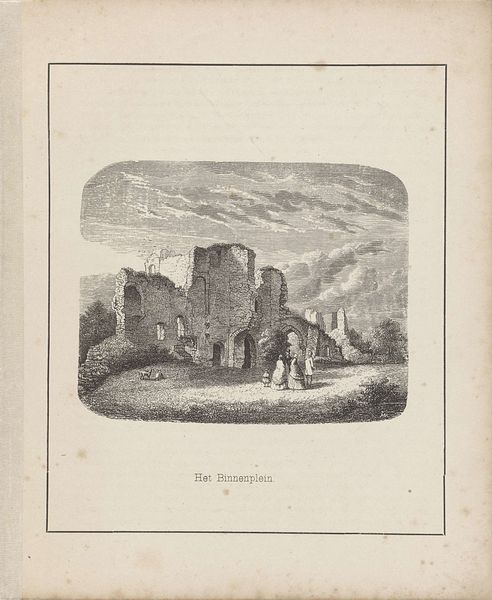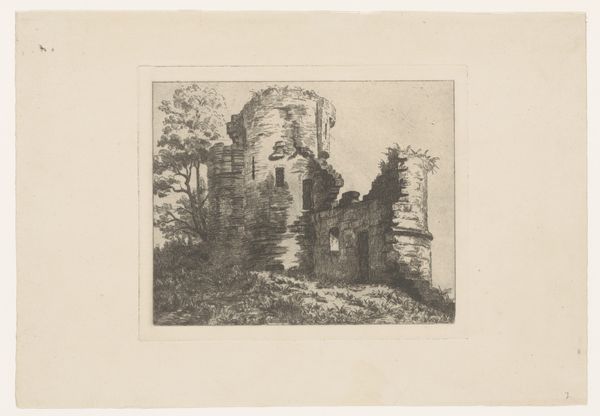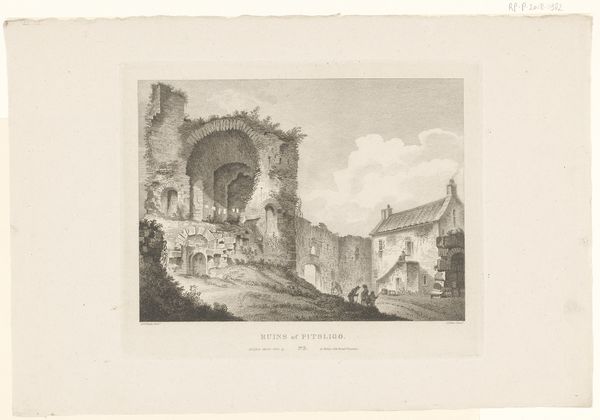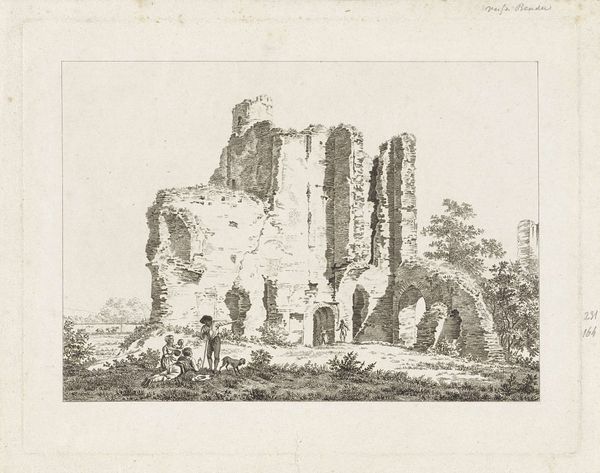
Dimensions: height 265 mm, width 210 mm
Copyright: Rijks Museum: Open Domain
Curator: Oh, this piece always gets me. It’s "Ruïnes van Chateau de Poulseur sur l'Ourte" by Auguste Numans, an etching dating from 1833-1879. A melancholic echo from the past, isn’t it? Editor: Yes, quite! The first thing that strikes me is the textural contrast—the craggy, ruined stone of the chateau against the soft, blurred suggestion of the landscape. The very *idea* of ruin is visually apparent! Curator: Absolutely. It’s almost as if Numans is making the statement that even the strongest structures can crumble to dust and stories. Editor: And consider the formal composition. The strong verticality of the remaining tower section dominates the frame. It is centered. Deliberately, I think, to emphasise its proud, if broken, stance against time. Note also how Numans’ use of line weights is employed. It's all designed to drive your eye upward, even through decay. Curator: True, and don't forget the small human figure nestled below the structure. It really gives a sense of scale, almost whispering of Romanticism’s favorite theme: the humbling of humanity before nature's relentless force. The tower has this grand kind of narrative in itself as this monument of a slow decay. Editor: It brings in that Romantic trope neatly but with a controlled visual syntax, rather than unbridled theatricality. Also, the detail, rendered through etching, is incredible. The rough stones are wonderfully detailed! Semiotically, they are visual indicators of deterioration, but beautiful ones. Curator: I can only imagine how much time and effort went into rendering this etching from his drawing. All to capture this sense of the old ruins—truly mesmerizing to be able to witness that. It gives a profound statement that only reminds us about how ephemeral and fragile things truly are, don't you think? Editor: Indeed, and through his clever visual choices, Numans manages to convey layers of meaning. Curator: Definitely something to take to heart. Well, I suppose this print always leaves me reflecting, which is perhaps the best compliment I can give it. Editor: A fitting tribute to art that not only documents but provokes thought long after its creation!
Comments
No comments
Be the first to comment and join the conversation on the ultimate creative platform.
